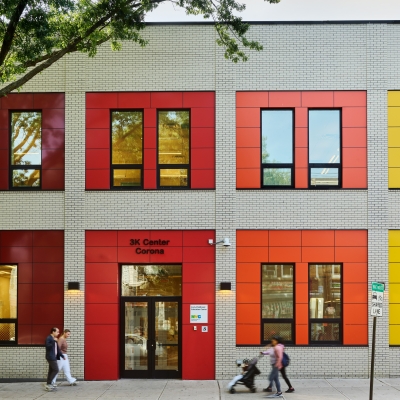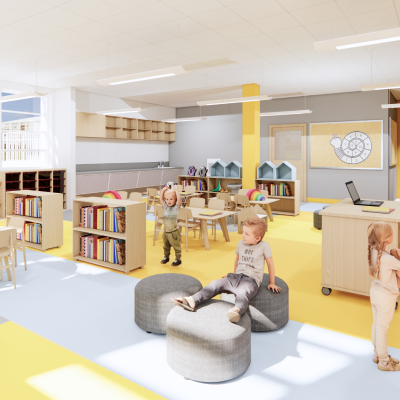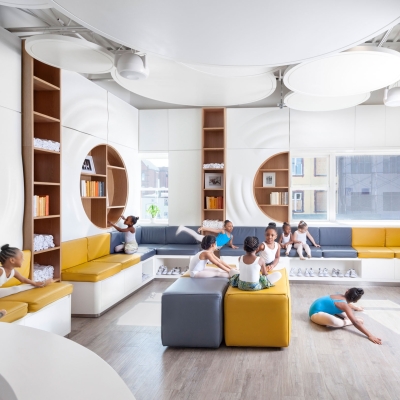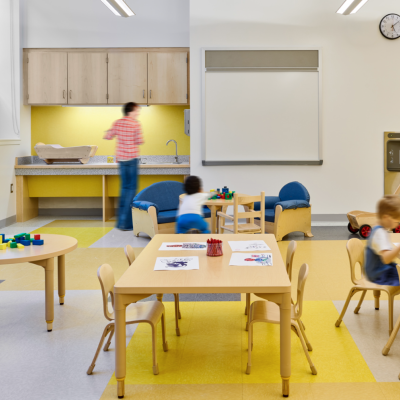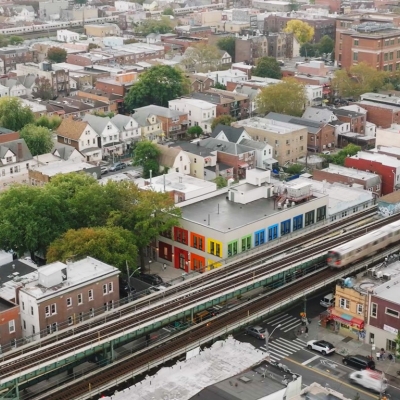Part 3 The ROI of Healthy Sustainable Schools - Common Spaces
2025.07.21
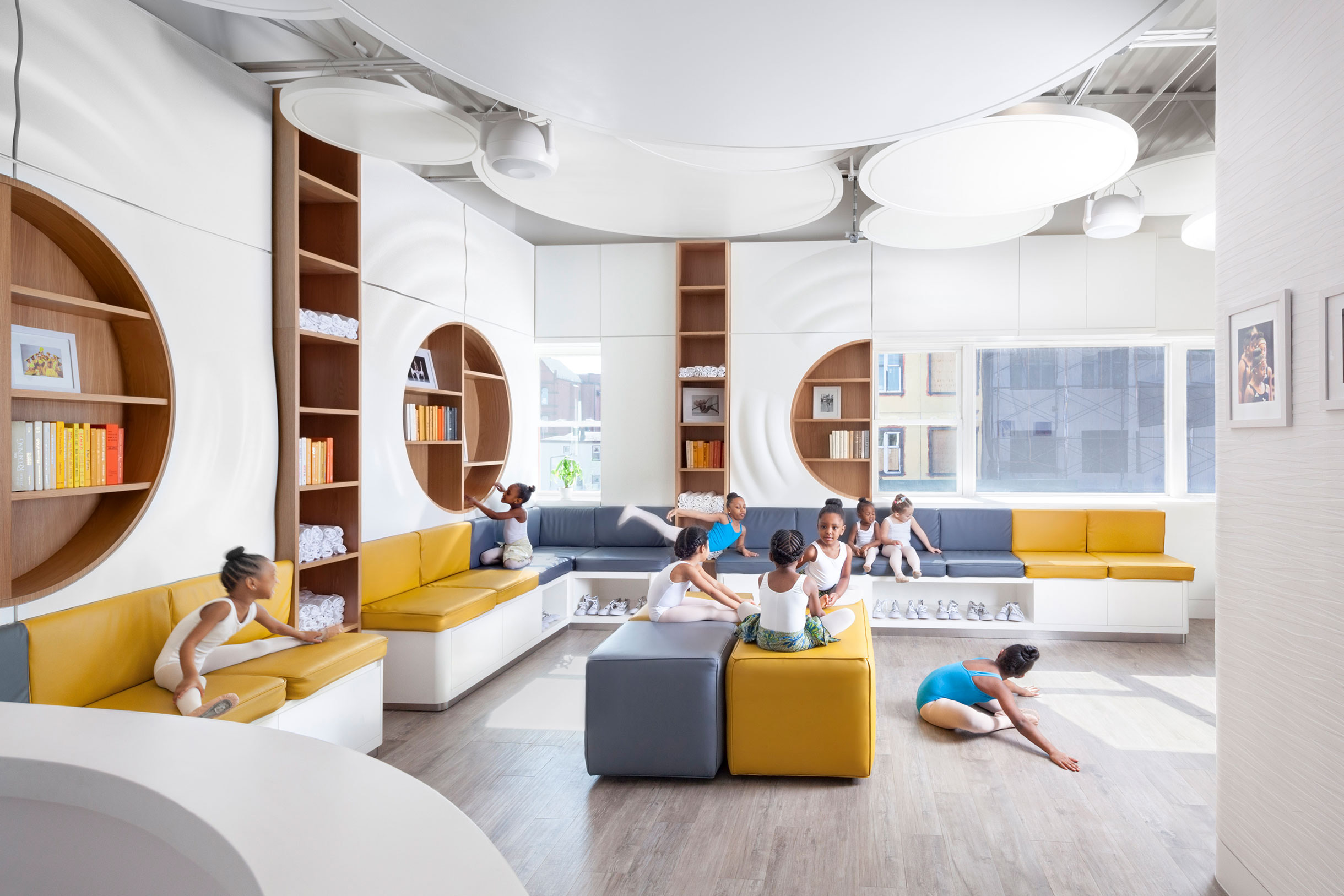
The commons — those shared spaces where people naturally gather — are more than just circulation zones or leftover square footage. In early childhood environments, they can shape how children feel, connect, and grow. When designed with care, commons help create a sense of safety, comfort, and belonging — all of which are key to supporting young children’s mental and emotional health.
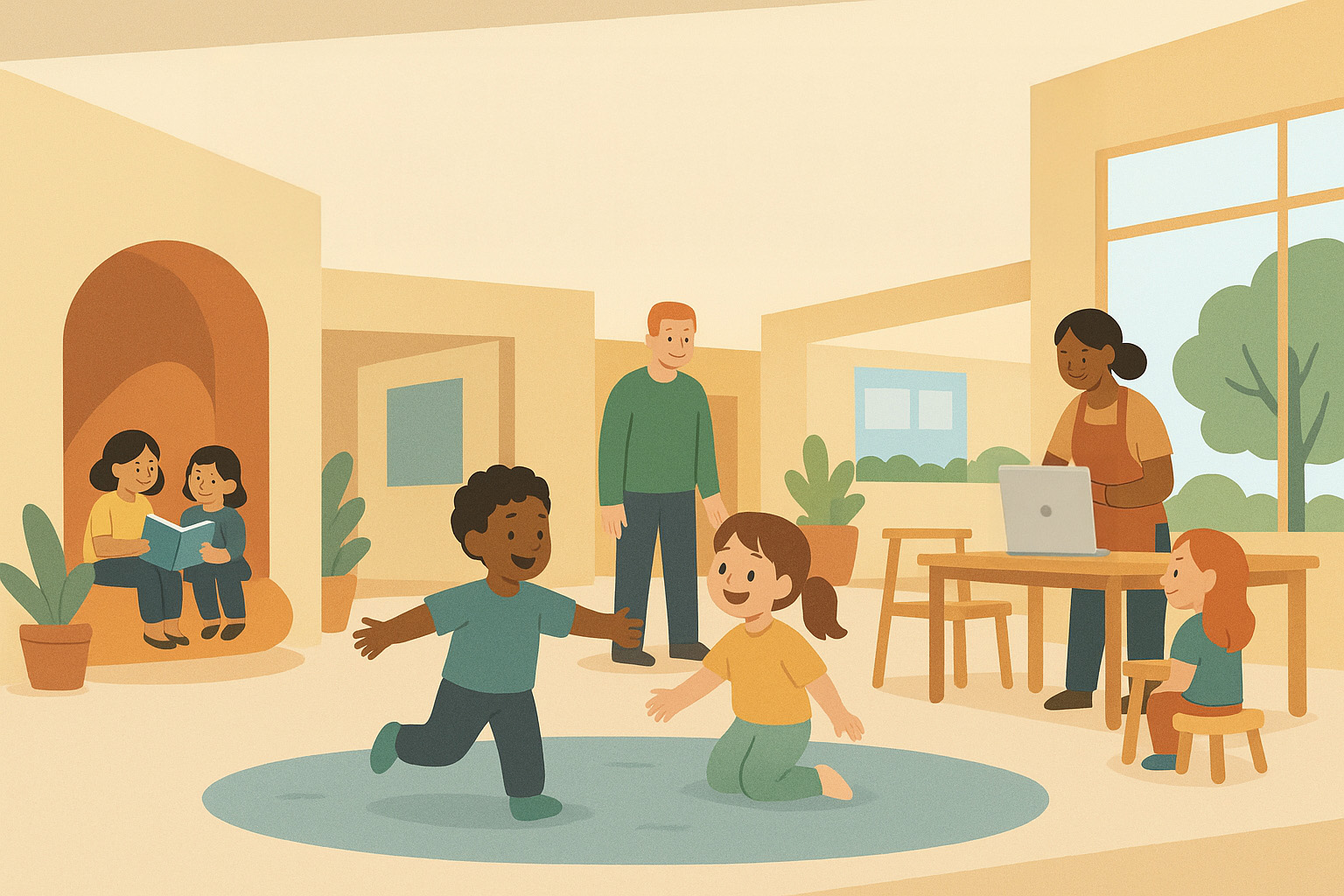
Where the Idea of Commons Comes From
The concept of shared space has long existed in public buildings — think of libraries with open reading rooms, hospital lobbies, or even parks in dense cities. These spaces were built to bring people together, encourage interaction, and give everyone access to calm, open environments.
Over time, schools adopted these same ideas. From cafeterias to shared hallways, educational spaces began to include zones where people could move freely, pause, observe, and connect — not just learn.
Commons in Today’s Early Learning Spaces
In many early childhood environments today, commons are no longer just “in-between” spaces. They’re central parts of the learning experience. You’ll see wide hallways used for group play, open kitchens that double as teaching tools, or cozy gathering nooks where children can sit together or take a break.
These spaces support autonomy and interaction — but just as importantly, they help children feel emotionally safe. With flexible layouts, soft daylight, and natural materials, commons create a calm atmosphere where young learners can explore without feeling overwhelmed.
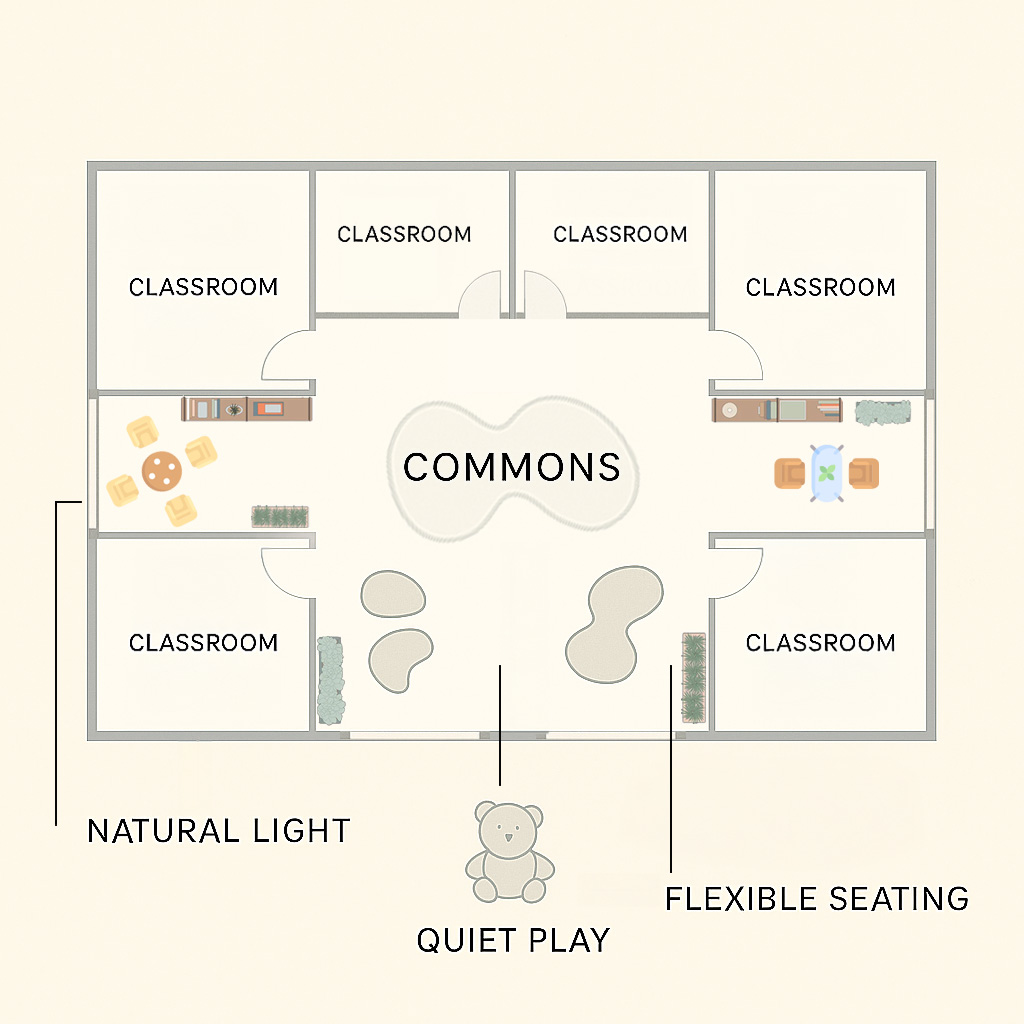
Why These Spaces Matter for Mental Health
Children, especially in their early years, are sensitive to the environments around them. A noisy, cramped space can heighten anxiety or overstimulation — while an open, shared space with good light and clear boundaries can do the opposite.
Commons give children space to breathe. They allow for unstructured play, gentle transitions between activities, and moments of quiet observation. These kinds of spatial cues can support emotional regulation, reduce stress, and help children build confidence in social situations — all foundational elements of mental health.
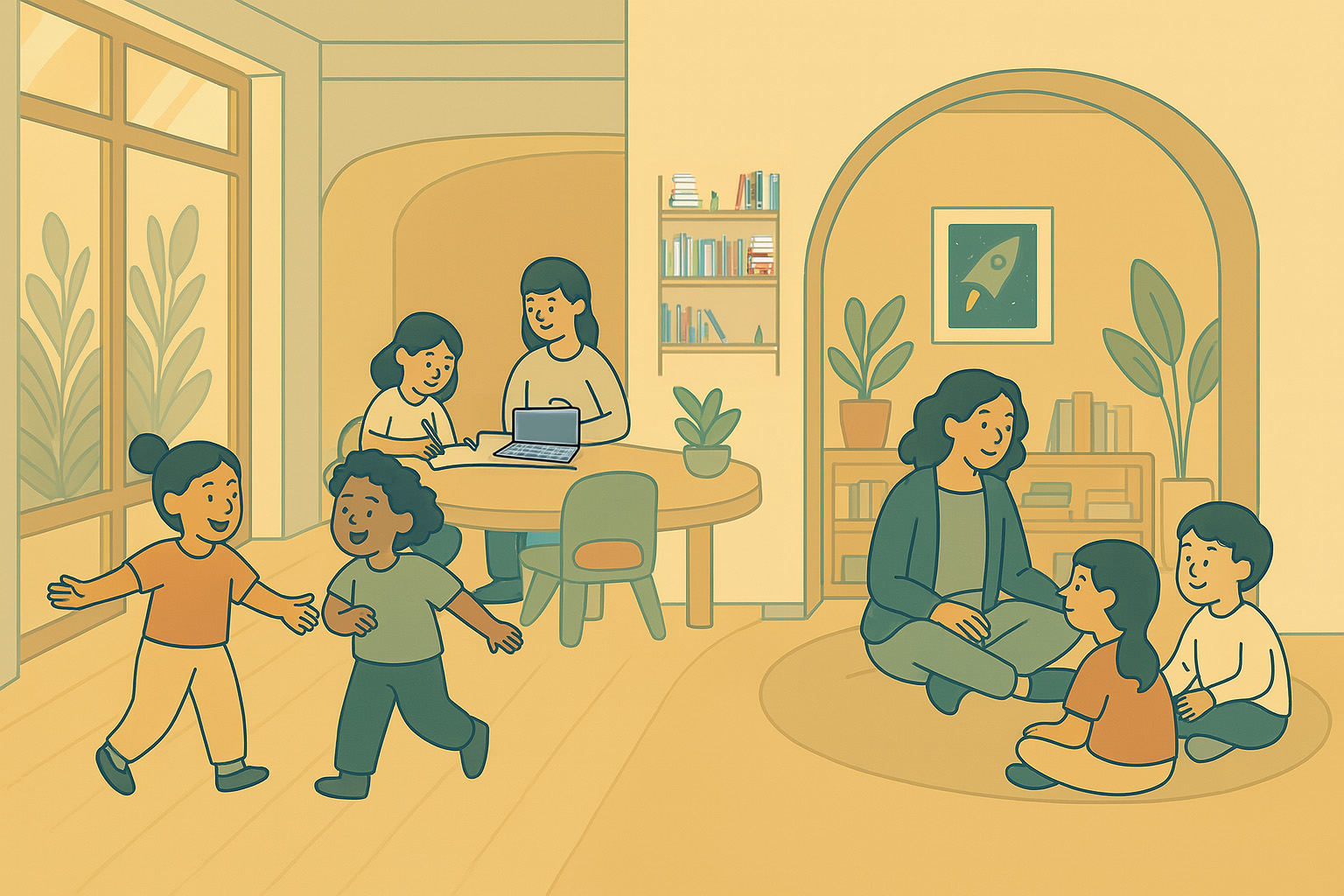
"The power of a commons lies in how it brings people — and ideas — together in one shared, supportive space."
— Donald Beagle
When we think about supporting children’s well-being, we often focus on curriculum or care — but space plays a role, too. Thoughtfully designed commons can quietly do powerful work: making children feel welcome, balanced, and part of a community.
Next time, we’ll take a close look at the role of the commons in early childhood environments, and how they affect the mental health & well-being of students and teachers alike.
Or jump ahead and check out some of our other posts in the series: Part 1; Part 2; Part 3
Stay tuned for more updates!



